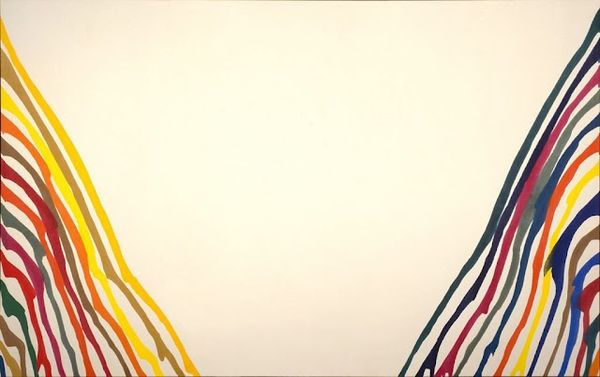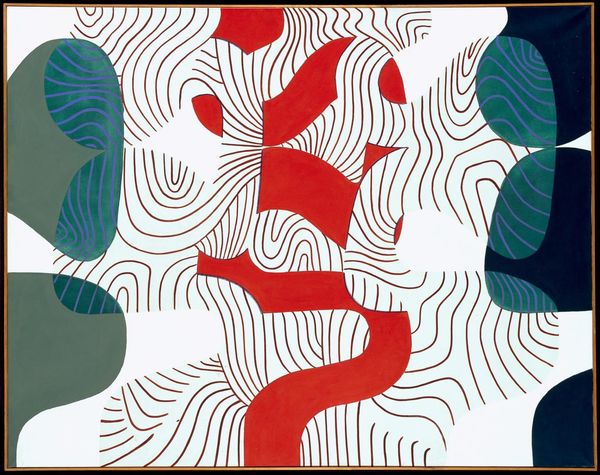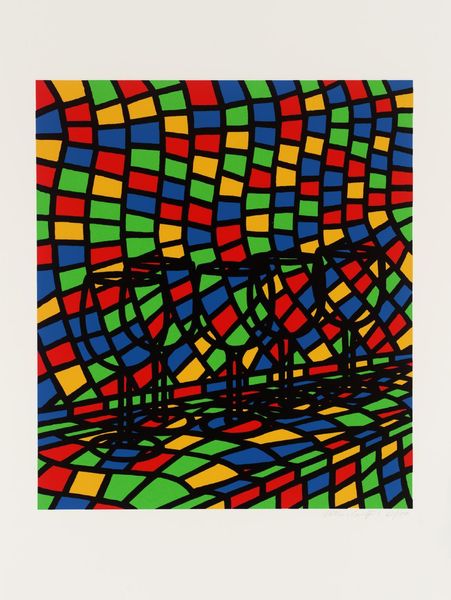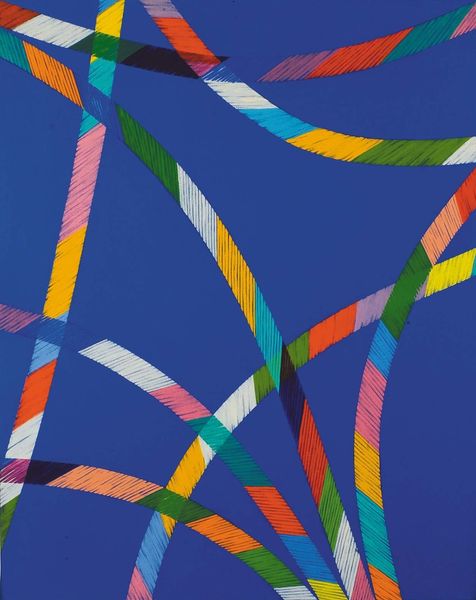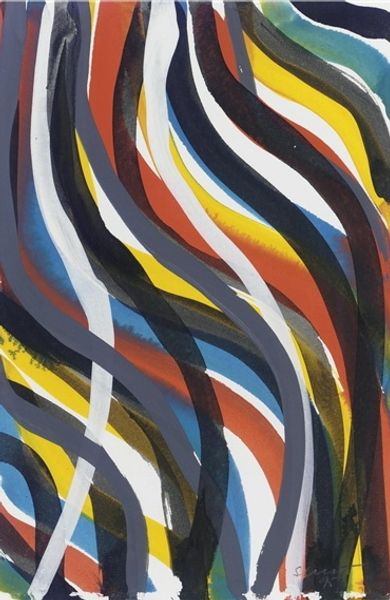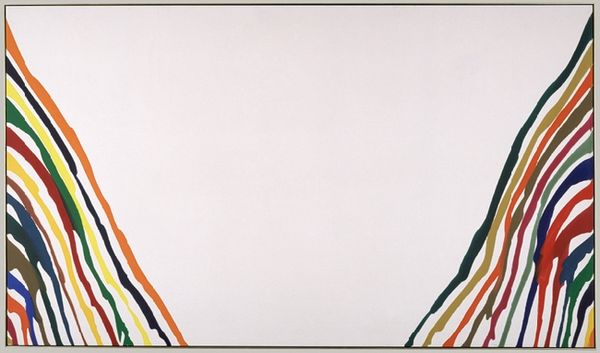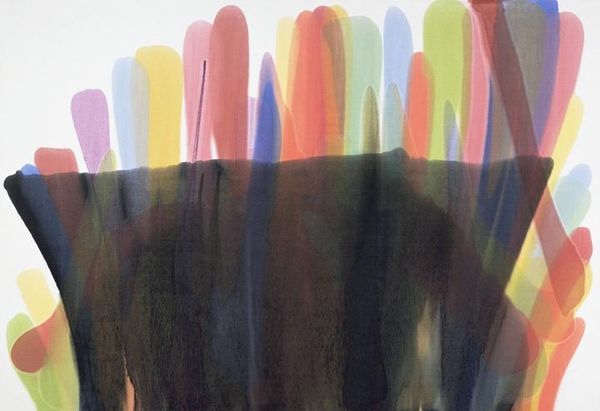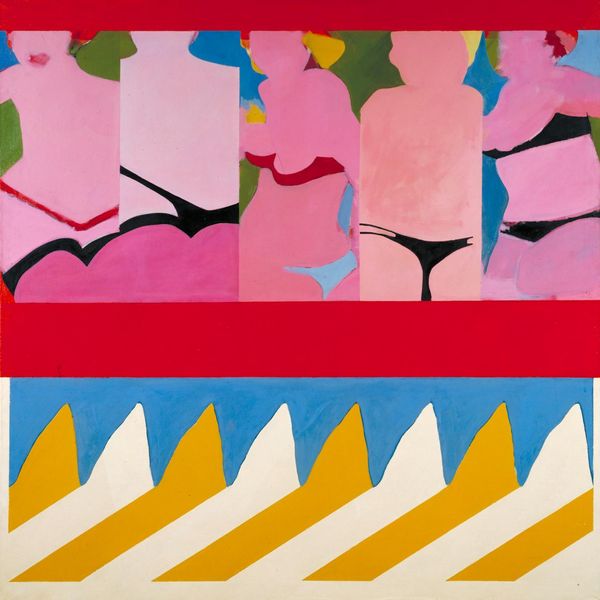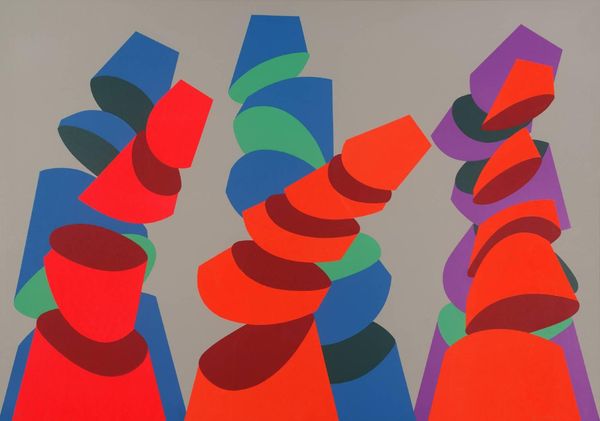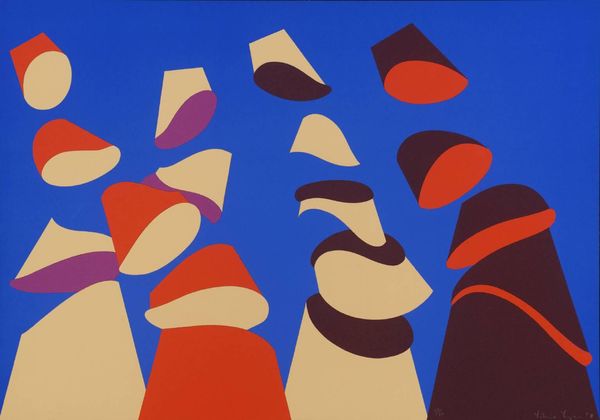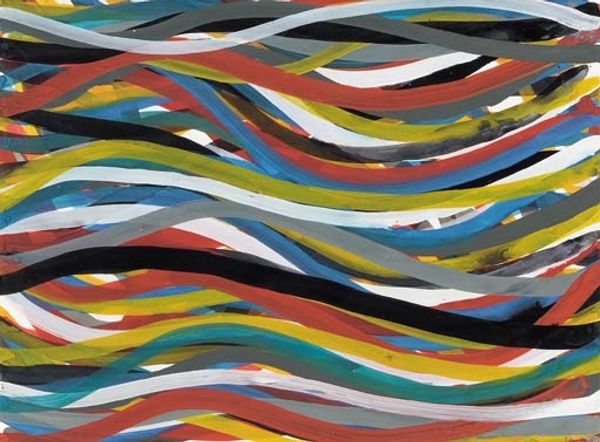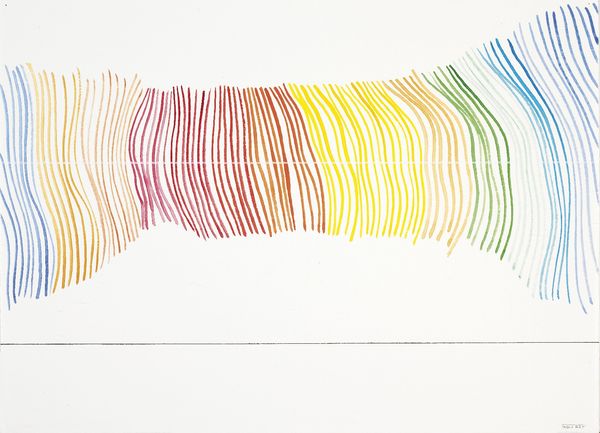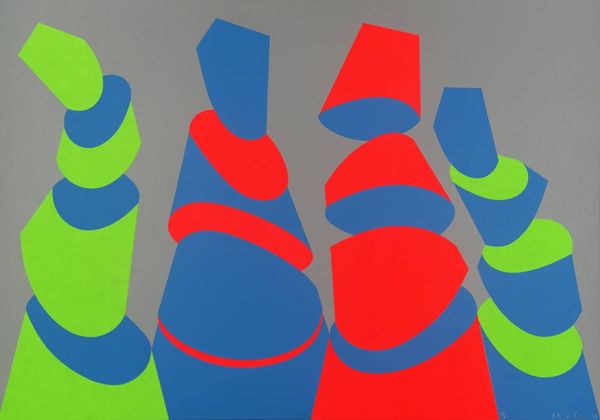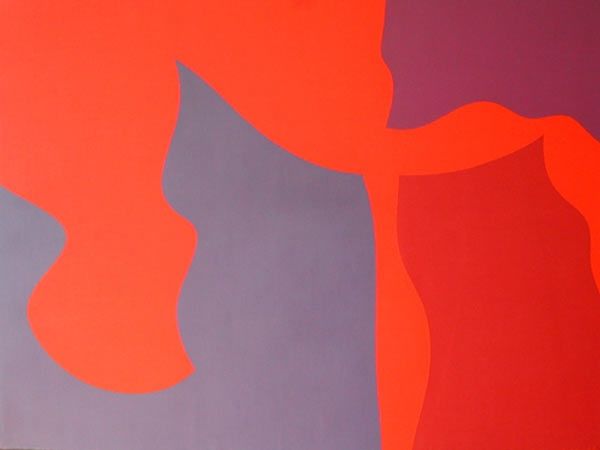
Copyright: Dieter Asmus,Fair Use
Curator: This is Dieter Asmus's 1971 painting, "Zebra II," executed in acrylic on canvas. What are your initial thoughts? Editor: Striking! The composition is so stark. That intense blue—a perfect, almost unnatural backdrop. And the red brick structure with the single zebra. It evokes a feeling of isolation. Curator: Isolation is a key element. Asmus was engaging with themes of alienation and the individual's place within a constructed reality. The zebra, a symbol of the exotic and untamed, is placed in a highly artificial environment. What does that juxtaposition tell us about control and freedom? Editor: Formally, it’s all about contrast. The smooth, unmodulated blue versus the textured brick, the organic curves of the zebra against the geometric platform it occupies. The artist focuses on pure visual elements, foregoing naturalistic color for stark, modern flatness. It pushes the piece into abstraction. Curator: I read it more as a commentary on zoos and wildlife parks—the commodification of nature for human consumption and entertainment. The zebra, fenced off and perhaps representing colonized bodies, becomes an object on display in this structure that simultaneously protects and confines it. What might that fence around the platform signify? Editor: Possibly. But consider the pure simplicity. The fence as a structural component draws the eye across the red plane. The repetition in the brick pattern itself becomes an abstract design element. The painting compels one to deconstruct not merely our surroundings, but how they function and the signs involved. Curator: True. The repetitive, artificial brickwork is critical in thinking about post-war industrialization. And given Asmus's involvement in the Hamburg art scene of the late '60s and early '70s, his paintings serve as stark critiques of consumer culture, social alienation, and even German reunification. Editor: Agreed. "Zebra II" holds up formally. And it’s rewarding to see that embedded inside the forms is the capacity to question systems, society and politics in the 70s. Curator: Indeed. Asmus presents the animal alone. But by forcing the viewer to question its containment, the painting encourages introspection of one's position as either watcher or watched.
Comments
No comments
Be the first to comment and join the conversation on the ultimate creative platform.
